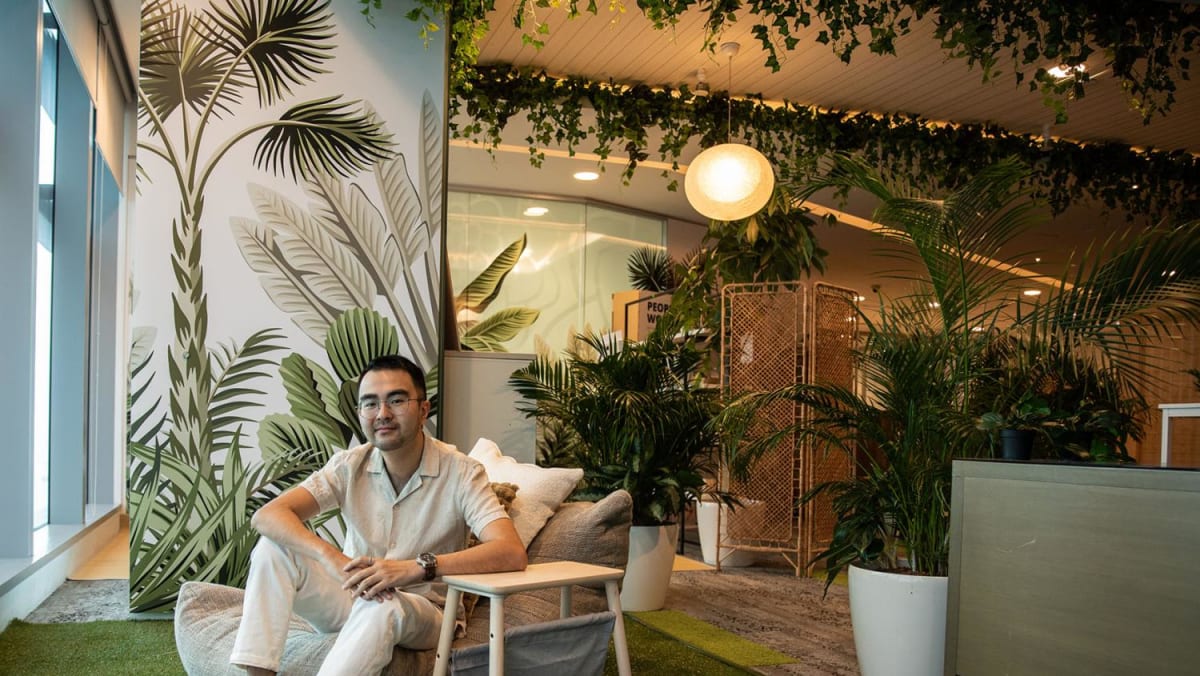Design has always held a special place in my heart since I was young.
Friends were also concerned that I would be forgoing the opportunity to become a professional architect and the possibility of setting up my own practice, which they saw as something prestigious and illustrious.
While they definitely had my interests at heart, I was also fortunate to have a counterweight in the advice of my family and other friends who encouraged me to explore new horizons while I was still young.
They persuaded me to view things from a different perspective: that if my intention really was to create good designs to impact people, there were other ways to skin this cat.
Despite their surprise at my decision, it was through the help of my supportive friends that I landed my current role as a workplace experience designer in late 2021 at DBS’ Corporate Real Estate Strategy and Administration team.
BECOMING A WORKPLACE EXPERIENCE DESIGNER
In my current job, my team and I work by observing users, soliciting their feedback, and conducting experiments to find out what works best for them.
For instance, as part of the bank’s effort to create purposeful spaces for hybrid work, my teammates and I ran pilots to design “ideation rooms” to enhance productivity and creativity which were based on behavioural research.
We designed these purpose-built spaces to be used for brainstorming workshops, but occupying the space to make conference calls would be a poor utilisation of their value, impeding their use for those who need them most.
To nudge intended behaviour, we placed atypical meeting room furniture such as stools and standing desks to create an atypical meeting setting, whilst also encouraging active participation to keep workshops focused.
To catalyse recycling habits among staff members, my team and I prototyped intuitive recycling bins and educational nudges. We experimented with reducing vending machine usage and optimising food waste management in our two staff cafeterias.
Ultimately, it’s about tailoring workspaces to meet needs.
Unlike an architect whose role is largely done once the building is built, as a workspace designer, it also means continuously monitoring and dealing with user feedback so that the design of spaces, or otherwise, can be improved upon.
While some may scoff at the idea that I’ve moved away from designing buildings to create office waste bins, I do not see this job as any less important or prestigious.
To me, the expanded scope of what I am doing now is an exciting challenge and getting to work on a wide variety of projects was something I looked forward to in my work. I was lucky to be able to make this career transition without a significant financial impact on myself.
At the end of the day, workplace experience design is a different trade from architecture.
To me, I derive more meaning from creating a good working environment for many more people than I did as an architect.
Spaces are meant to be used by people, and so their designs can either elevate or detract from their purposes. I know that the work I do thus has an outsized impact on more people who actually need to work in these buildings.
Nearly two years into this new role, I continue to learn and grow each day. While transitioning from architecture to experience design required a significant shift in focus, I was thankful that my university education in design thinking had helped to ease the change.
On this note, my career switch might not be as drastic or a complete change as many others, but the personal journey I had to go through to find meaning in work was still a challenge. I still needed to overcome my mental hurdles.
Looking back, I always had a choice of what I wanted to be committing my time and energy to.
Not everyone might make the same choices I did if they were in my situation, since one can find meaning in work in many ways.
Some choose to dive deep into their passions, others look squarely at the money they make from work, or some see the impact they leave behind from their work as the most important factor of all.
What matters is that you have to decide what is important to you. And at the end of the day, when you find out what that is, know that it is better to have tried something that might not work out than to regret not trying at all.
ABOUT THE AUTHOR:
Marcus Liu, 29, is a workplace experience designer at DBS Bank.


